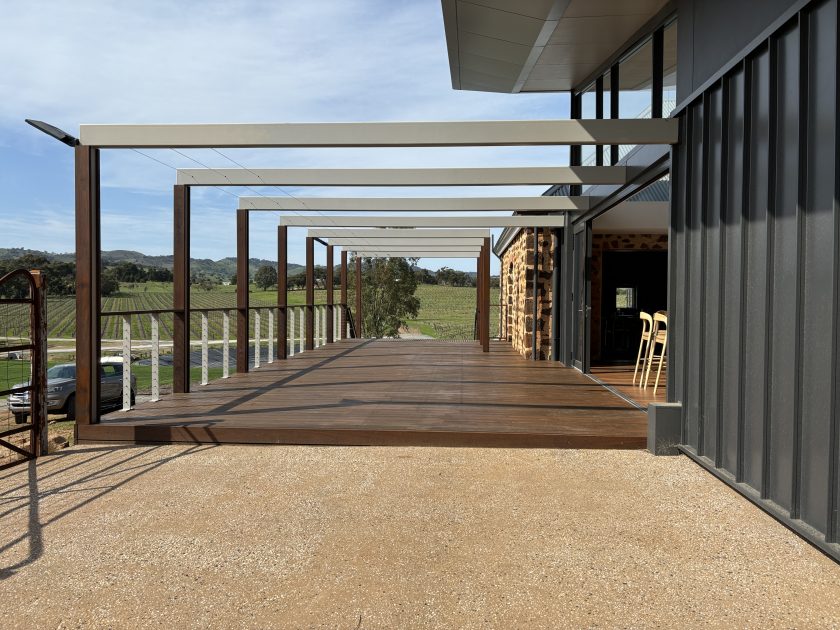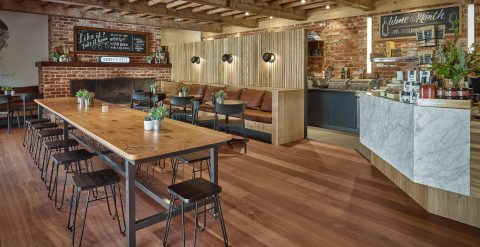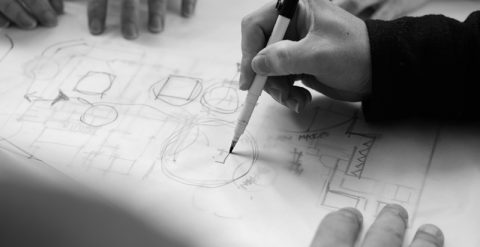
Framing the View: Architecture That Invites Exploration
Not all curiosity hides in the shadows.
Sometimes, it lives in the wide open — under big skies, across vineyard valleys, between ancient gums and open thresholds.
In architecture, we often talk about curiosity as something to be provoked through intrigue: hidden corners, immersive installations, moments of surprise. But when a project is about openness — about vastness, outlook, breeze, and barefoot flow — curiosity takes a different shape.
It becomes less about discovery and more about presence.
Open Spaces Aren’t Empty Spaces
There’s a misconception that expansive, open environments don’t need “design.” That the view does all the work. But in truth, the more natural and effortless a space feels, the more intentional the architecture behind it usually is.
When you’re designing with nature as your main character, curiosity becomes about how you reveal, frame, and pace the experience.
It’s about orchestrating the first glimpse of a ridgeline.
It’s the slow release of light as you move through a cool entry into a sunlit courtyard.
It’s the feeling of being anchored, then expanded.
This is the architecture of restraint — and it’s where curiosity thrives in its quietest, most lasting form.
Curiosity Isn’t Always About Surprise — Sometimes, It’s About Stillness
In enclosed, immersive settings (like museums or installations), curiosity often takes the form of questions: What’s behind that door? What happens next?
In open, nature-connected spaces, curiosity is more embodied.
It asks:
What is this place inviting me to feel?
What do I notice when I slow down?
How do I fit into this landscape?
Good design in these contexts doesn’t shout. It listens. It hints. It nudges attention, not redirects it.
Pacing the Reveal
Great views are like great stories — they need timing.
Flood someone with the full panorama on arrival and you risk overwhelming or desensitising them. But if you lead them through a rhythm — of intimacy to openness, of grounded to elevated — the experience becomes far more memorable.
This can be as simple as:
- Framing a landscape through a portal or narrow view
- Creating thresholds between spaces (internal to external, light to shade)
- Using texture underfoot to slow movement, encourage pause
In this way, curiosity becomes a matter of choreography, even in the most seemingly effortless spaces.
Designing With Nature, Not Just Around It
When curiosity is grounded in landscape, we’re not designing for novelty. We’re designing for connection.
That means drawing attention to the scent of eucalyptus after rain, the sound of gravel underfoot, the flicker of shadows on a rammed earth wall.
It means creating spaces that invite embodied engagement — where visitors don’t just see the landscape; they feel part of it.
These are the kinds of spaces that reverberate — not through spectacle, but through intimacy. Not through information, but through atmosphere.
Architecture as an Invitation
When we design for curiosity in open spaces, we’re not creating puzzles.
We’re creating invitations — to pause, to breathe, to notice.
And in doing so, we build places that foster not just memorable experiences, but meaningful ones. The kind visitors carry home in their bodies, not just in their camera rolls.
At S2 Architects, this is the kind of design we return to again and again.
Architecture that doesn’t impose a story, but offers a stage for one to unfold.
Because when nature leads, curiosity doesn’t disappear.
It deepens.
🌀 Interested in rethinking how your open space could spark more emotional connection?
We’d love to explore it with you. https://www.s2architects.com.au/contact-us/
#PlaceIdentity #OpenArchitecture #IndoorOutdoorLiving #ExperienceDesign #TourismSpaces #VisitorCentres #CuriosityByDesign #NatureConnectedArchitecture #S2Architects





